Menus
- New ninja diet
- Pulling power paired with a performance explosion
- Technical data test Kawasaki ZX-6R (2008)
- Noticed
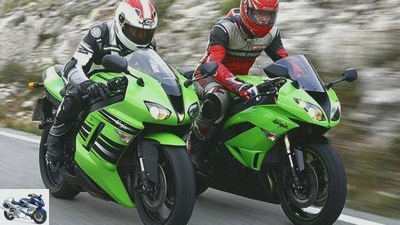
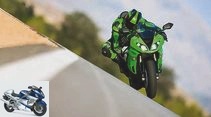
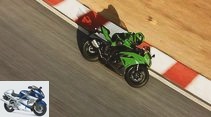
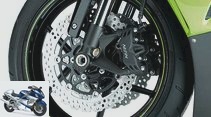
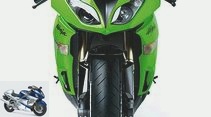
24 photos
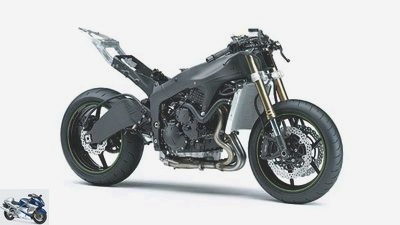
Kawasaki
1/24
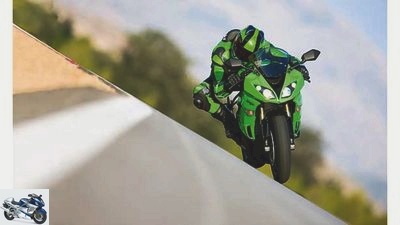
Kawasaki
2/24
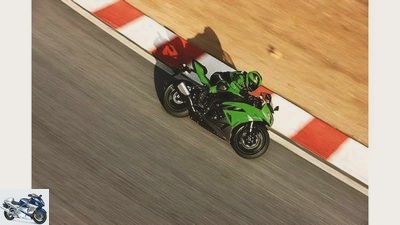
Kawasaki
3/24
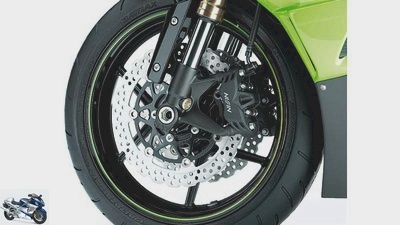
Kawasaki
4/24
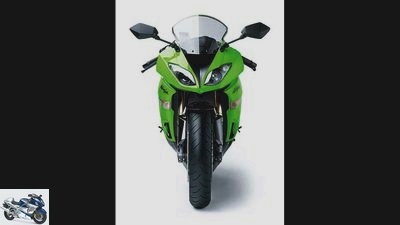
Kawasaki
5/24
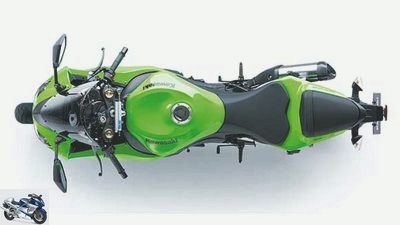
Kawasaki
6/24
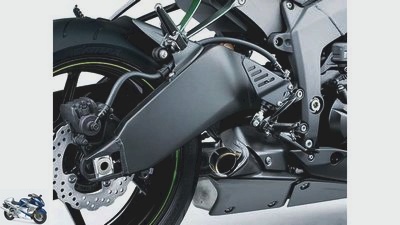
Kawasaki
7/24
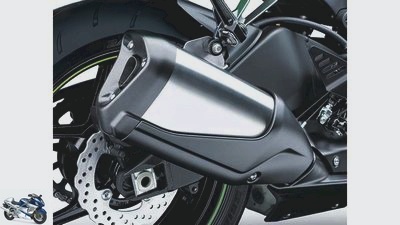
Kawasaki
8/24
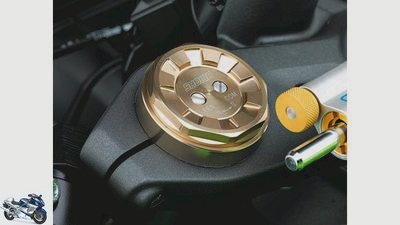
Kawasaki
9/24
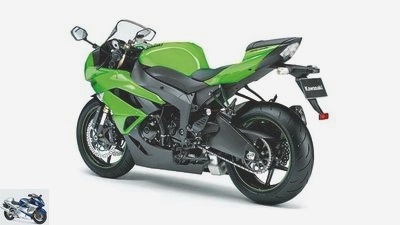
Kawasaki
10/24
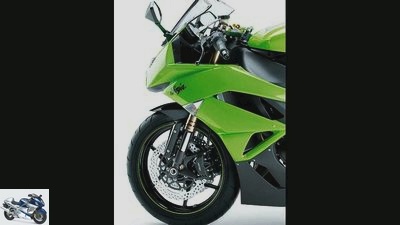
Kawasaki
11/24
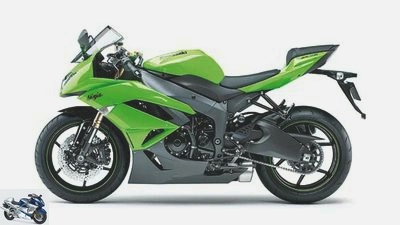
Kawasaki
12/24
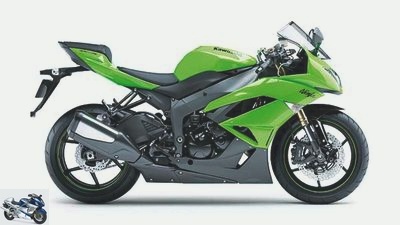
Kawasaki
13/24
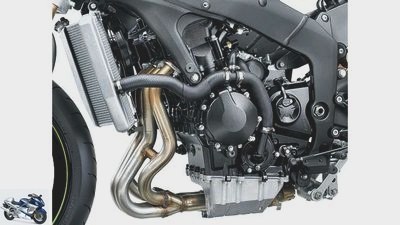
Kawasaki
14/24
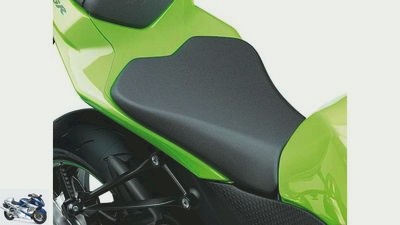
Kawasaki
15/24

Kawasaki
16/24
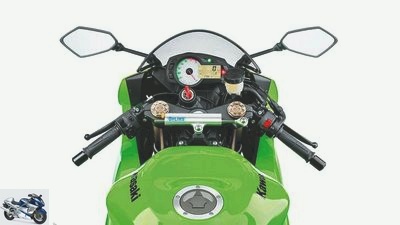
Kawasaki
17/24
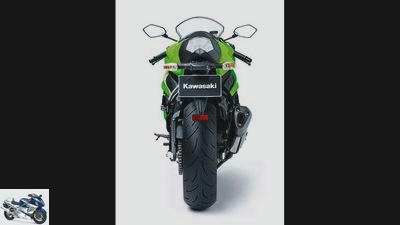
Kawasaki
18/24
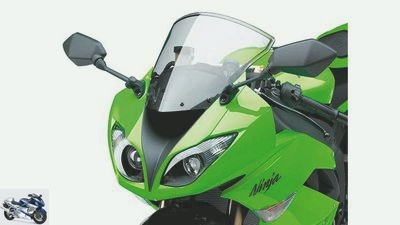
Kawasaki
19/24
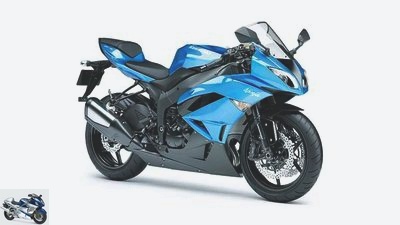
Kawasaki
20/24

Kawasaki
21/24

Kawasaki
22/24
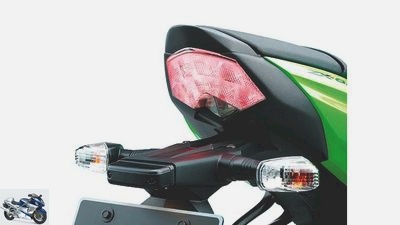
Kawasaki
23/24
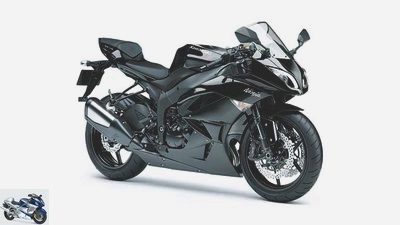
Kawasaki
24/24
Review Kawasaki ZX-6R
New ninja diet
They still exist, the great advances, even in the 600 class: the new Kawasaki ZX-6R has become ten kilograms lighter. And when driving, it reveals other qualities.
Theory and practice, measurement and experience values ?? seldom are they so perfectly in tune as when dealing with the Kawasaki ZX-6R from the year 2009. If you look at the performance curves, for example, then measure the pull-through values ?? so happened on the test track in Hockenheim ?? and one day later circles through the first bends of a pass over the Sainte-Baume massif in southern France, there is no break between numbers and driving experience, everything fits seamlessly into one picture.
The new, old ZX-6R pulls away in sixth gear between 100 and 140 km / h by 0.6 seconds; a halfway imaginative reader can easily imagine what happens in second or third gear when accelerating out of a bend. Anyone who already has experience with 6-series Kawas could even get the impression that the new model had 636 cm³ displacement again like the previous model, so powerfully does it attract. This impression even stands up to the comparison with the performance and data of this year’s 600 series. The new six is right at the front in terms of acceleration, in pulling it is only surpassed by the 675 Triumph, and when it comes to weight, with a full tank of 193 kilograms, it has finally lost its long-standing status of the class chubby.
Jahn
Size comparison: The Kawasaki designers were also able to reduce the optical weight of the ZX-6R.
The increased and smoothed performance curve in the middle speed range was made possible by new intake trumpets, modified cam profiles and a newly designed exhaust system with front silencer under the engine and right-hand rear silencer. Piston rings with less tension reduce the internal friction of the engine, and optimized injection nozzles are supposed to ensure improved throttle response. Whether it is solely up to you that the load change actually takes place very smoothly, or whether other factors are involved, from the adjustment of the map to the clearly careful preparation of the test motorcycle, does not matter at first. One thing is certain: Anyone who will find hacking load changes among the later ZX-6R buyers should not be satisfied with them and insist on improvements. Because the MOTORRAD test machine proves that the throttle response of the four-cylinder can be brought close to perfection. The same applies to its impressive smoothness. These properties give the super sports car drive a remarkable suitability for everyday use. Although the frugal use of gasoline also contributes to this, this statement is by no means to be understood as an expression of brittle reason.
Pulling power paired with a performance explosion
Because even in severe, wintry weather ?? it was either cold and rainy or even colder, windy and sunny in Provence ?? The pulling power of the ZX-6R paired with the performance explosion from 8000 rpm simply made unbridled driving pleasure. No doubt about it, you still prefer to ride Kawasaki’s youngest at Sch … wetter than not at all, and that’s one of the greatest compliments you can ever give a motorcycle. It goes without saying that the chassis must also play a role. While last year’s ZX-6R releases itself somewhat slowly from the central position when turning, and then develops a slight but noticeable tendency to tilt further with increasing lean angle, the new one goes through the same maneuver nice and neutral. She always gives in in a playful way, yet she doesn’t seem wobbly. To do this, the developers had to put in even more effort than when redesigning the engine. With the shorter wheelbase, the steering head, which is one degree steeper and the caster that is seven millimeters shorter, the chassis geometry has been trimmed towards maneuverability, and the frame rigidity in the area of the swing arm bearings has been reduced. In addition, the engine was turned up around the transmission output shaft so far that the center of gravity of the motorcycle shifted 16 millimeters upwards.
Not to forget the weight reduction of ten kilograms mentioned at the beginning and the abandonment of the underseat exhaust, thanks to which a larger proportion of the weight is concentrated near the center of gravity. So that the newly gained lightness and handiness are visually expressed, the 2009 model has been made narrower and lower, which although the wind protection suffers, the view in front of the front wheel is clearer. This causes a psychological handling advantage. The series tires, Bridgestone BT 016 in the special specification ?? L ??, cooperate perfectly with the newly configured chassis; it built up good grip even in the wet and cold, and the front tire steered with confidence. Since the comparison presented here was not carried out on the racetrack and the low temperatures did not invite you to test the spring elements when the temperature was high, the differences in the response behavior of the two forks were particularly noticeable. The new ZX-6R has a so-called BPF fork (Big Piston Fork) with thick damper pistons 37 millimeters in diameter. They should create a more favorable ratio of damping force and hydraulic pressure in the damping system and therefore respond more finely than the cartridge forks used previously.
This actually works, without reducing the compression damping or the basic setting of the fork appearing too weak. Even in undulating passages, the front wheel follows the contour of the road surface very precisely, which not only increases driving comfort but also the grip of the front tire. The BPF actually follows an old construction principle that is less complex and less expensive than the cartridge system. For the first time, however, it is implemented in the ZX-6R fork with modern materials, so it now seems possible in large-scale production what is always fascinating about high-quality racing forks with their friction-optimized inners? Smooth mechanics with full hydraulic damping. Provided that the series can maintain the level presented by the test machine. Last but not least, the high-quality equipment with smooth Ohlins steering damper and adjustable anti-hopping clutch speaks in favor of the new ZX-6R. Especially since its price has only increased by 225 euros compared to its predecessor.
Technical data test Kawasaki ZX-6R (2008)
engine
Water-cooled four-cylinder four-stroke in-line engine, two overhead, chain-driven camshafts, four valves per cylinder, bucket tappets, wet sump lubrication, injection, Ø 38 mm, regulated catalytic converter, alternator 315 W, battery 12 V / 8 Ah, mechanically operated multi-disc oil bath clutch (anti -Hopping), six-speed gearbox, chain, secondary ratio 43:16.
Bore x stroke 67.0 x 42.5 mm
Displacement 599 cm³
Compression ratio 13.3: 1
Rated output 94.1 kW (128 hp) at 14,000 rpm
Max. Torque 67 (66) Nm at 11800 / min (11700 / min)
landing gear
Bridge frame made of aluminum, upside-down fork, Ø 41 mm, adjustable spring base, rebound and compression damping, steering damper, two-arm swing arm made of aluminum, central spring strut with lever system, adjustable spring base, rebound and compression damping, double disc brake at the front, Ø 300 mm, four-piston fixed calipers , Rear disc brake, Ø 220 (210) mm, single-piston floating caliper.
Cast aluminum wheels 3.50 x 17; 5.50 x 17
Tires 120/70 ZR 17; 180/55 ZR 17
Tires in the test Bridgestone BT 016 ?? L ??
mass and weight
Wheelbase 1400 (1405) mm, steering head angle 66 (65) degrees, caster 103 (110) mm, spring travel f / r 120/134 (120/133) mm, seat height * 810 (820) mm, weight fully fueled * 193 (203) kg, tank capacity 17.0 liters.
Two year guarantee
Service intervals every 6000 km
Colors blue, green, black
Price 10890 (10665) euros
Additional costs around 180 euros
Readings
Top speed 262 (262) km / h
0 100 km / h 3.4 (3.4) sec
0 ?? 140 km / h 5.2 (5.1) sec
0 200 km / h 9.9 (9.6) sec
Draft
60 ?? 100 km / h 4.5 (4.3) sec
100 ?? 140 km / h 4.8 (4.5) sec
140 180 km / h 5.1 (4.5) sec
Speedometer deviation
Effective display 50/100 48/95 (48/95) km / h
consumption
Country road 5.1 (4.8) liters / 100 km
Fuel type super (super)
Theoretical range of highway 333 (354) km
Noticed
plus
+ Motor powerful, smooth-running, frugal
+ Sensitively appealing fork
+ Equipment rich, high quality
+ Handy, balanced chassis
minus
– Price has not risen sharply, but is high
– Wind protection was better with the old woman
Related articles
-
Photo: Kawasaki 24 photos Kawasaki 1/24 Kawasaki 2/24 Kawasaki 3/24 Kawasaki 4/24 Kawasaki 5/24 Kawasaki 6/24 Kawasaki 7/24 Kawasaki 8/24 Kawasaki 9/24…
-
Gargolov 20th photos Kawasaki 1/20 Kawasaki 2/20 Kawasaki 3/20 Kawasaki 4/20 Kawasaki 5/20 Kawasaki 6/20 Kawasaki 7/20 Kawasaki 8/20 Kawasaki 9/20…
-
Comparison test of supersports: Honda CBR 600 F, Kawasaki ZX-6R, Suzuki GSX-R 600, Yamaha YZF 600 R
Comparison test of super sports cars: Honda CBR 600 F, Kawasaki ZX-6R, Suzuki GSX-R 600, Yamaha YZF 600 R Let’s twist again Wake up, people. In the 600s …
-
Comparison of handling concepts: Husqvarna TE 610E, Kawasaki ZX-6R, Yamaha FZS 600 Fazer
Concept comparison handling: Husqvarna TE 610E, Kawasaki ZX-6R, Yamaha FZS 600 Fazer WISCH WEG engine power or not, in the tricky curve labyrinth …
-
Kawasaki ZX-6R 636 super sports car in the test
Jahn 25 pictures Jahn 1/25 Kawasaki ZX-6R 636 – the new super sports car in the test. fact 2/25 Kawasaki ZX-6R 636 in the test. fact 3/25 Kawasaki ZX-6R 636 in the test ….
-
Kawasaki premiere: Kawasaki ZX-6R The 636 ninja from Kawasaki Content of traction control, two power modes, ABS – the 600 series are …
-
Comparison test between Kawasaki ZX-6R and Kawasaki ZX-9R, Yamaha YZF-R6 and Yamaha R1
Artistic comparison test Kawasaki ZX-6R against Kawasaki ZX-9R Yamaha YZF-R6 against Yamaha R1 Attack from the depth Technically unchanged go Kawasaki ZX-9R …
-
Jahn Review Kawasaki ZZR 1400 Silver surfer Stronger, cleaner, sharper: The 2008 Kawasaki ZZR 1400 comes with a G-Kat, more steam and many fine…
-
Triumph Daytona 675, Kawasaki ZX-6R 636 and Suzuki GSX-R 750 in the test
fact 20 pictures fact 1/20 super athlete with less than 1000cm³ in the comparison test. Suzuki GSX-R 750, Kawasaki ZX-6R 636 and Triumph Daytona 675. fact 2/20 …
-
Driving report Kawasaki ZX-6R 2013
Manufacturer The new 2013 super sports car from Kawasaki Driving report Kawasaki ZX-6R The new ZX-6R is not only vying for the favor of supersport fans…